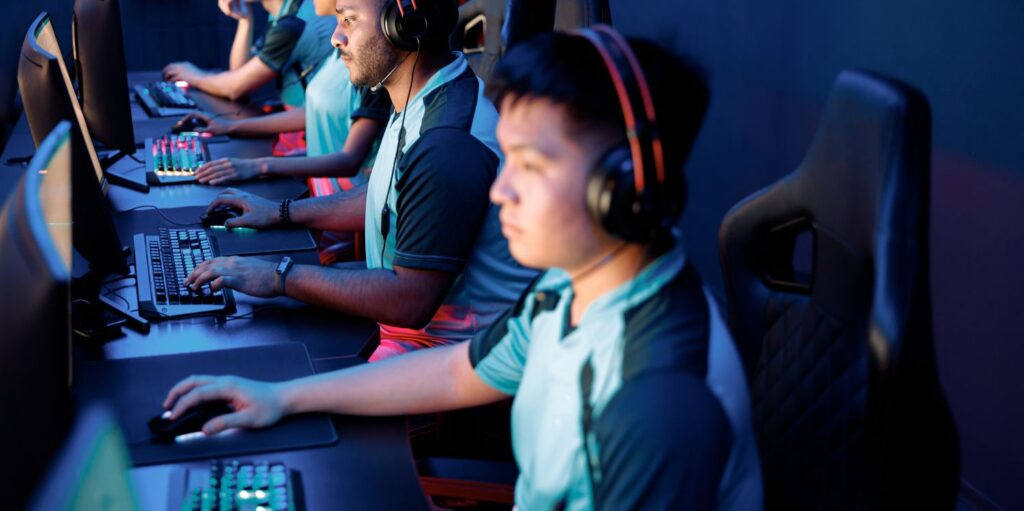Introduction
Multiplayer game development is a complex process that requires careful planning, technical expertise, and a focus on player experience. Creating a successful multiplayer game involves addressing various challenges, from ensuring stable network performance to fostering engaging gameplay. This article outlines ten critical steps for developing successful multiplayer games.

1. Conceptualize and Plan Your Game
Define Your Vision
Start with a clear vision of your game. Define the genre, core mechanics, and unique selling points. Determine whether your game will be competitive, cooperative, or a blend of both. Establish the target audience and platform(s) your game will be available on, whether it’s PC, console, or mobile.
Detailed Documentation
Create comprehensive design documents that cover all aspects of the game, including gameplay mechanics, user interface, and network architecture. This documentation will serve as a blueprint for your development team, ensuring everyone is aligned and understands the project’s goals.
2. Choose the Right Technology
Game Engine
Select a game engine that supports multiplayer functionality and suits your game’s requirements. Popular choices include Unity and Unreal Engine, both of which offer robust tools for multiplayer game development.
Networking Solutions
Choose a networking solution that can handle your game’s expected player count and performance requirements. Options include Photon Engine, Unity Network solutions and Epic Online Services for Unreal Engine.
3. Build a Strong Infrastructure
Server Architecture
Design a scalable server architecture that can handle high loads and provide low-latency connections. Decide between dedicated servers, peer-to-peer (P2P) networking, or a hybrid approach based on your game’s needs.
Database Management
Implement a robust database management system to handle player data, matchmaking, and game state information. Ensure your database is optimized for quick read and write operations to maintain smooth gameplay.
4. Focus on Security
Data Protection
Protect player data with strong encryption methods and secure communication channels. Implement measures to prevent data breaches and ensure compliance with data protection regulations.
Anti-Cheat Measures
Develop and integrate anti-cheat mechanisms to maintain fair gameplay. This can include server-side checks, behavior analysis, and third-party anti-cheat solutions.
5. Optimize Network Performance
Latency Reduction
Minimize latency by optimizing network code and server locations. Use techniques such as client-side prediction and server reconciliation to provide a smooth experience for players with varying connection qualities.
Bandwidth Management
Efficiently manage bandwidth usage by compressing data and sending only necessary information. Reduce the frequency of updates for less critical data to save bandwidth and improve performance.
6. Develop a Robust Matchmaking System
Skill-Based Matching
Implement a matchmaking system that pairs players based on skill level, ensuring fair and balanced matches. Use ranking algorithms like Elo or TrueSkill to assess player abilities accurately.
Queue Management
Manage matchmaking queues effectively to minimize wait times and provide a positive player experience. Consider implementing background matchmaking that allows players to engage in other activities while waiting.
7. Design Engaging Gameplay
Balanced Mechanics
Ensure all game mechanics are balanced and fair. Regularly test and adjust gameplay elements to maintain competitiveness and enjoyment for all players.
Content Updates
Keep the game fresh and engaging by regularly releasing new content, such as maps, characters, and game modes. Continuous updates encourage player retention and attract new users.
8. Implement Social Features
Friends and Clans
Integrate social features that allow players to add friends, join clans, and communicate easily. Social connectivity enhances player engagement and creates a sense of community. Such features doesn’t need to contain specifically a standard chat, but can work emojis made for the game itself and even a controlled trading system.
Leaderboards and Achievements
Include leaderboards and achievement systems to foster competition and reward player progress. These features motivate players to improve and stay engaged with the game.
9. Conduct Extensive Testing
Alpha and Beta Testing
Run extensive alpha and beta tests to gather feedback and identify issues. Engage with a diverse group of testers to ensure the game performs well across different devices and network conditions.
Continuous QA
Implement continuous quality assurance (QA) processes to catch and fix bugs early. Regularly update the game based on player feedback and QA findings.
10. Plan for Post-Launch Support
Community Management
Build a dedicated team for community management to interact with players, address concerns, and gather feedback. A strong community presence helps maintain player loyalty and attract new users.
Ongoing Development
Plan for ongoing development and support after the game’s launch. Regular updates, bug fixes, and new content releases are crucial for maintaining a successful multiplayer game.
Conclusion
Successful multiplayer game development requires careful planning, robust infrastructure, engaging gameplay, and continuous support. By following these ten critical steps, developers can create multiplayer games that not only attract players but also keep them engaged for the long term. Embrace these strategies to navigate the complexities of multiplayer game development and achieve lasting success.
Additional Resources
Further Reading
- “Multiplayer Game Programming: Architecting Networked Games” by Josh Glazer and Sanjay Madhav
- “Game Engine Architecture” by Jason Gregory
Online Resources
- Gamasutra for industry news and articles on multiplayer game development.
- Game Developer Conference (GDC) talks for insights from leading developers.

